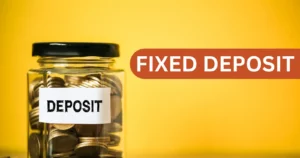A Demat account, short for “Dematerialized account,” is essential for trading and holding securities in electronic form. This guide covers the definition, various types, benefits, workings, and steps to open a Demat account, providing you with a comprehensive understanding of this crucial financial tool. Whether you’re an investor or a trader, learning about Demat accounts will streamline your market transactions and enhance your investment experience.
What is a Demat Account?
Demat is an acronym for Dematerialize. What is Dematerialize? It is a process in which physical securities like stock certificates, etc are converted into electronic form and stored there. Demat Account holds the electronic account of stocks, bonds, mutual funds, and exchange-traded funds (ETFs).
It is important to hold a demat account to trade stocks in the stock exchange. Demat accounts allow you to hold dematerialized share certificates.
The Securities Exchange Board of India (SEBI) stipulates the digitization of stock certificates and Demat accounts. Stock certificates of unlisted companies are managed using physical paper stock certificates (Form SH-1), which carry the risk of loss or forgery, so there is a trend in India to digitize all stock certificates. However, it has not yet been realized.
By using a Demat account, you can not only easily hold and transfer shares, but also receive dividends from the company issuing the shares. There are also benefits such as no stamp duty when transferring shares through a Demat account.
Benefits Of Demat Account
There are many benefits of opening a Demat Account-
- Electronic Holding of Securities: A Demat Account eliminates the need for a physical certificate. It changes the physical certificate into electronic form, which reduces the risk of loss, theft, damage and many more. It is a safer and more convenient option.
- Easy Transfer of Securities: Investors can easily transfer securities from one account to another account. It is also easy to give or transfer securities to family members, friends and other beneficiaries.
- Quick Settlement: A demat account is the seamless and speedy settlement of trades in the stock market. When investors buy or sell securities through a Demat account, the transaction is settled electronically and reduces the paperwork.
- Lower Transaction Cost: Trading with the Demat account lowers transaction costs as per the traditional trading process. There are no brokerage fees, or tamp duty and save money on each transaction.
- Better tracking and Management: Online demat accounts allow investors to access detailed portfolio statements, transaction history, and real-time updates on their holdings. Every transaction is easy to track with a demat account.
- Eligibility for IPO and FPO: With the Demat account, you are eligible to participate in initial public offerings (IPOs) and follow-on public offerings (FPOs) of companies.
- Easy Access: An online demat account, gives quick and easy access to all your investments stock and statements You can check real-time updates.
How Does a Demat Account Work?
Demat Account is a convenient and secure way to buy, sell and hold securities in the financial markets. Here is the overview of how a Demat Account operates-
- Demat Account: The process of a this account begins with the account setup. To set up the account, choose a registered depository participant (DP), which could be a bank, financial institution, or brokerage firm. Investors need to fill out the form with the required document to verify the Know Your Customer (KYC) details like proof of identity, proof of address, and a passport-sized photograph. After document verification, ua the Demat account number (also known as Client ID) to the investor.
- Dematerialization of Securities: Dematerialization of Securities means converting physical share certificates into electronic form. Investors need to submit their physical certificates to their DP. Later, they will manage and update the investor’s Demat account with the electronic holdings.
- Trading Securities: After the conversion of securities into electronic form, investors can start trading in the stock market. After execution of a trade, the securities or shares will be reflected in the Demat accounts of the buyer and seller.
- Settlement Process: The settlement process is done between the buyer and seller after the trade is executed. The settlement cycle in India is about T+2, meaning that transactions are settled two business days after the trade date. On the settlement date, the securities are debited from the seller’s Demat account and credited to the buyer’s Demat account.
- Portfolio Management: A demat account provides portfolio management tools to all investors. Investors can view their holdings, transaction history, dividend payments, corporate actions, and portfolio valuation in real-time through the online platform.
How To Open a Demat Account?
To trade in the stock market, you need to create a Demat Account. It is a straightforward process which you can do online. Step-by-step guide to open a Demat account-
- Choose a Depository Participant (DP): To open a demat account online, first select a Depository Participant (DP). They are entities authorized by depository services such as NSDL (National Securities Depository Limited) or CDSL (Central Depository Services Limited) that provide Demat accounts to the investor.
- Visit DP Website: After selecting DP, visit their official website to initiate the Demat account. Nowadays, most DPs provide an online platform to fill out the necessary form and submit the required document to open the Demat Account.
- Fill Out Application Form: Fill out the application form and provide the personal information (name, address, date of birth), contact details, PAN (Permanent Account Number), Aadhaar number, bank account details, and nominee information
- Upload KYC Document: IInvestors need to verify the Know Your Customer (KYC) process by uploading scanned copies of supporting documents such as proof of identity (PAN card, Aadhaar card, passport, voter ID) and proof of address (utility bills, bank statements, rent agreement)
- E-Signature and Verification: Once the application form is filled, check it and upload the electronic signature using an Adhaar-based e-signature or digital signature.
- Payment Fee: Now, pay the required fee for the account opening and other charges. Remember, the fee structure changes as per the DP and the type of account (individual, joint, corporate, etc.). You can pay the fee by online mode using net banking, debit card, credit card, or other electronic payment methods.
- Verification and Approval: After submitting all the details, DP will verify the details and will check the KYC. They also verify the PAN details with the Income Tax Department. After successful verification, the Demat account will be approved and activated.
- Login Demat Account: After approval of the Demat Account, investors will receive the account details such as Demat account number (DP ID), client ID, and login credentials (username and password) via email or SMS. Investors can log in to the account with credentials.
- Start Trading: Now, investors can start trading and perform buying and selling of stocks, bonds, mutual funds, and ETFs. It is easy to access even from home and office.





